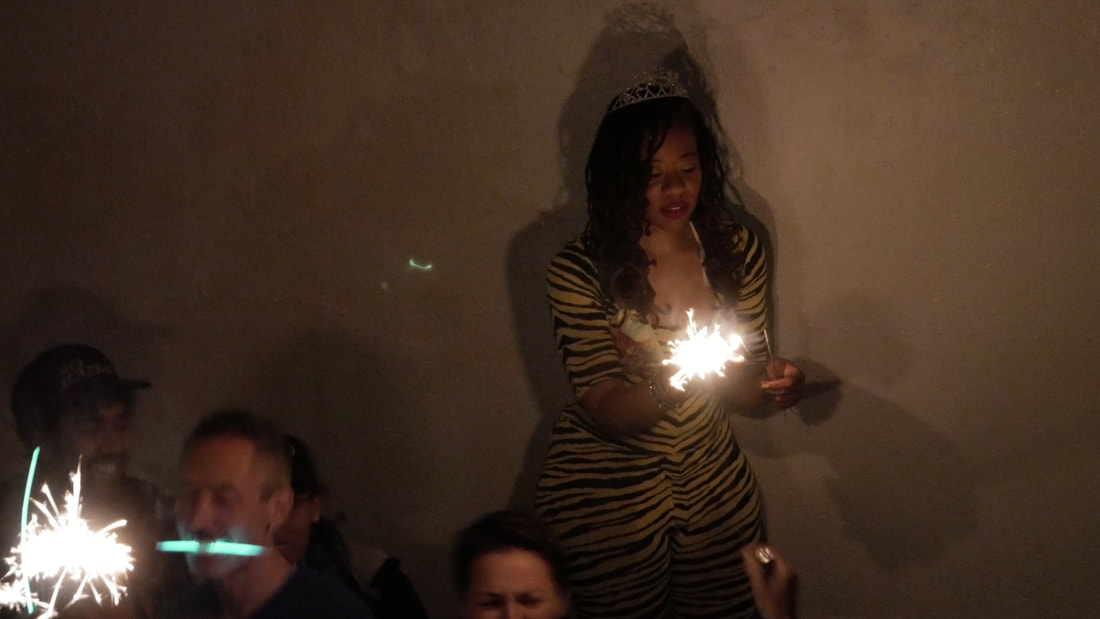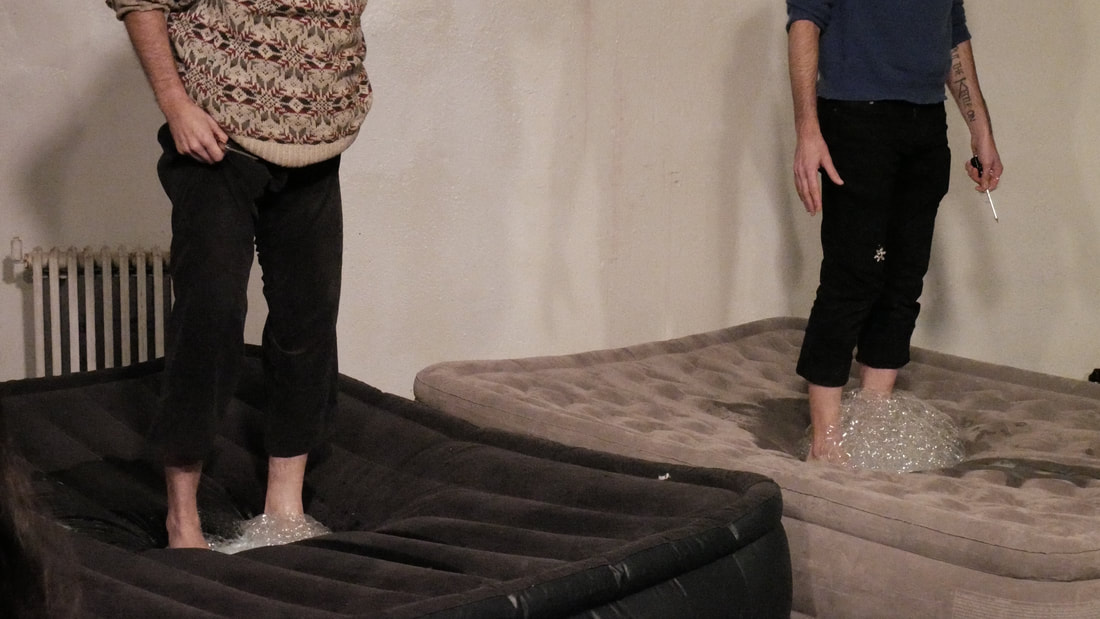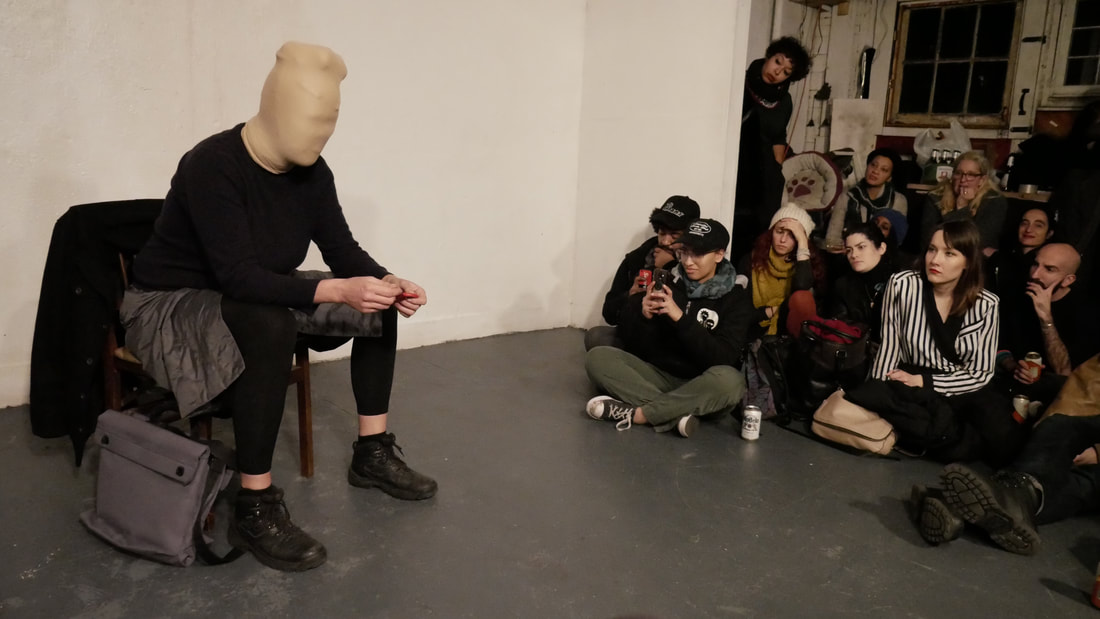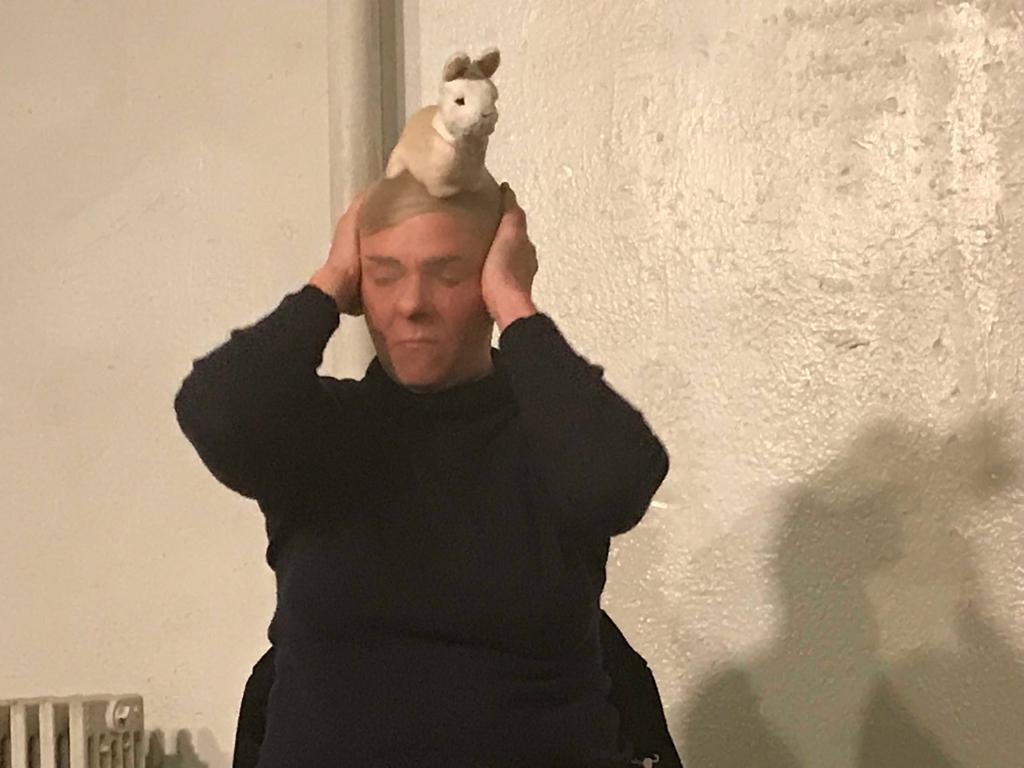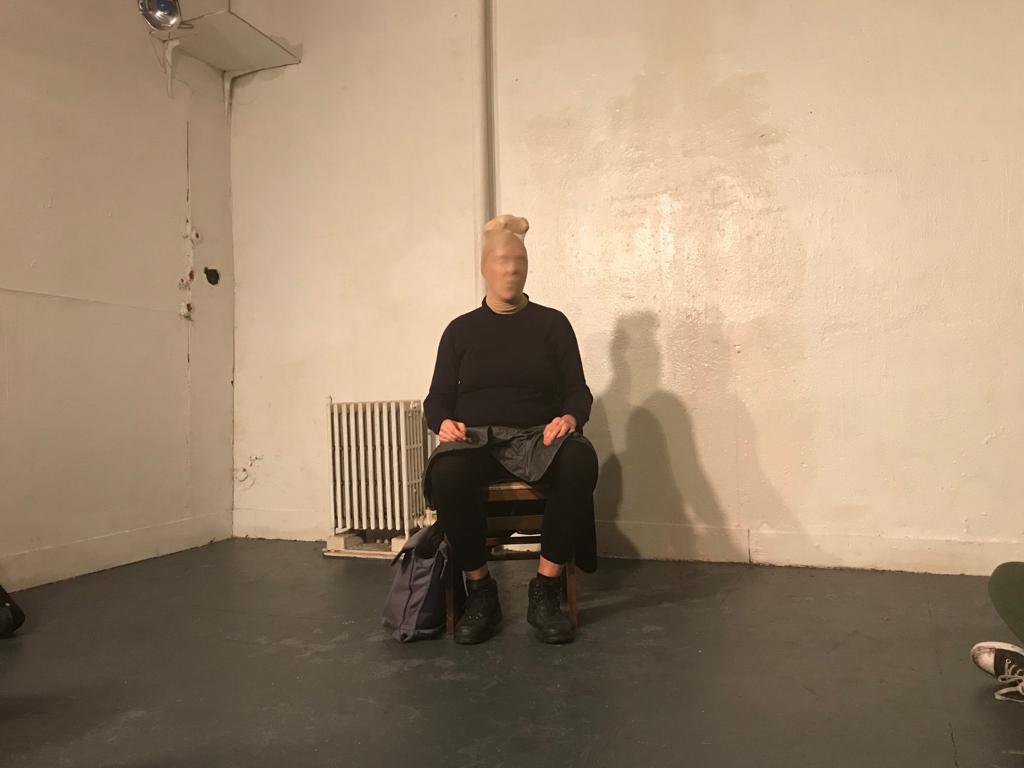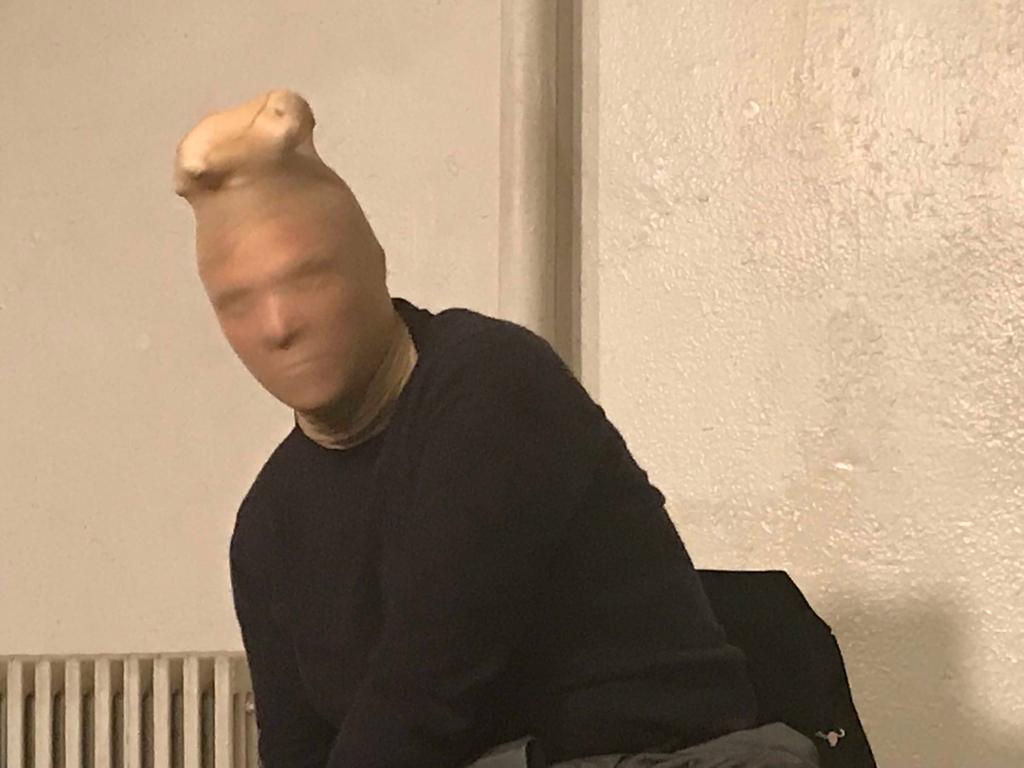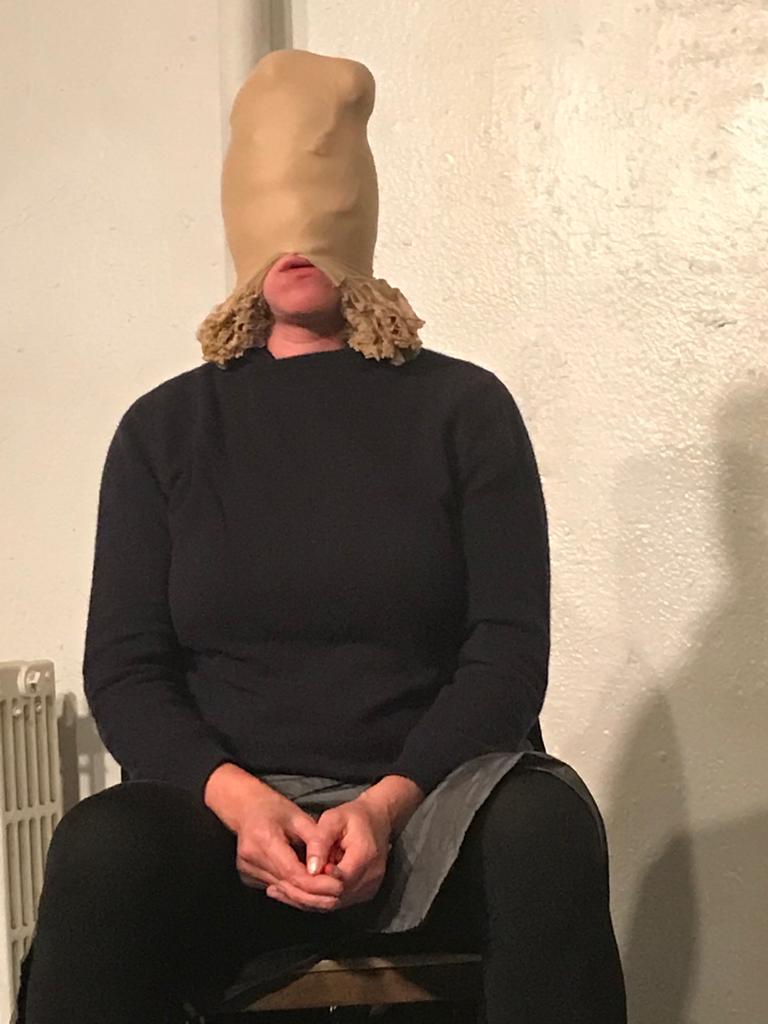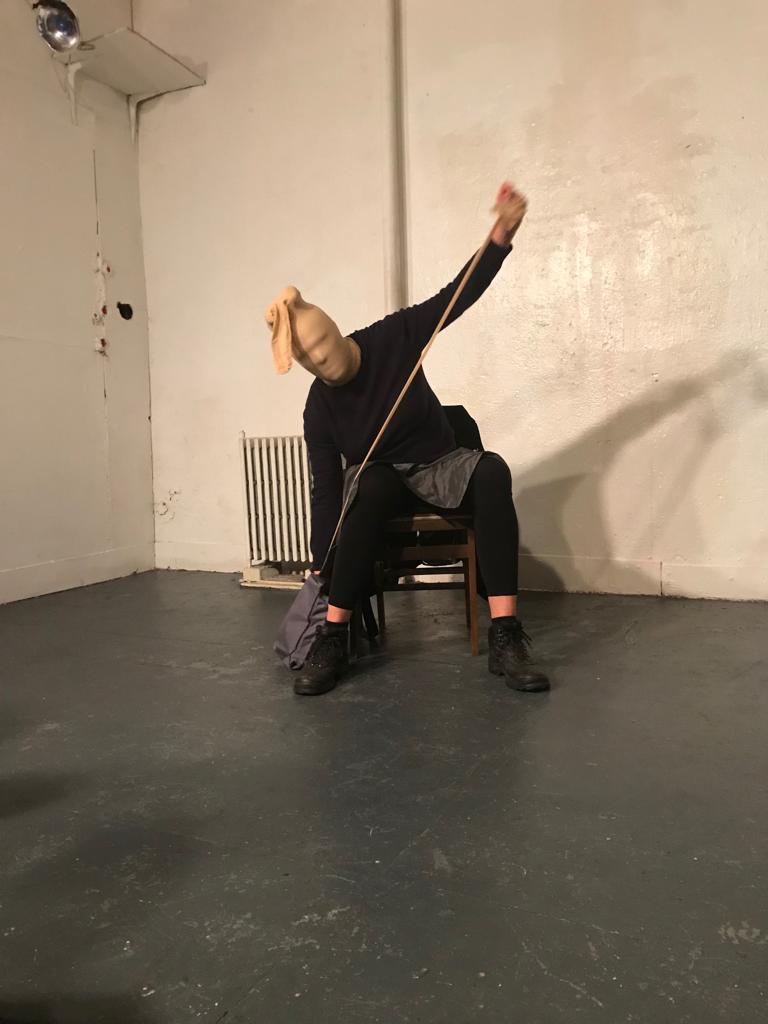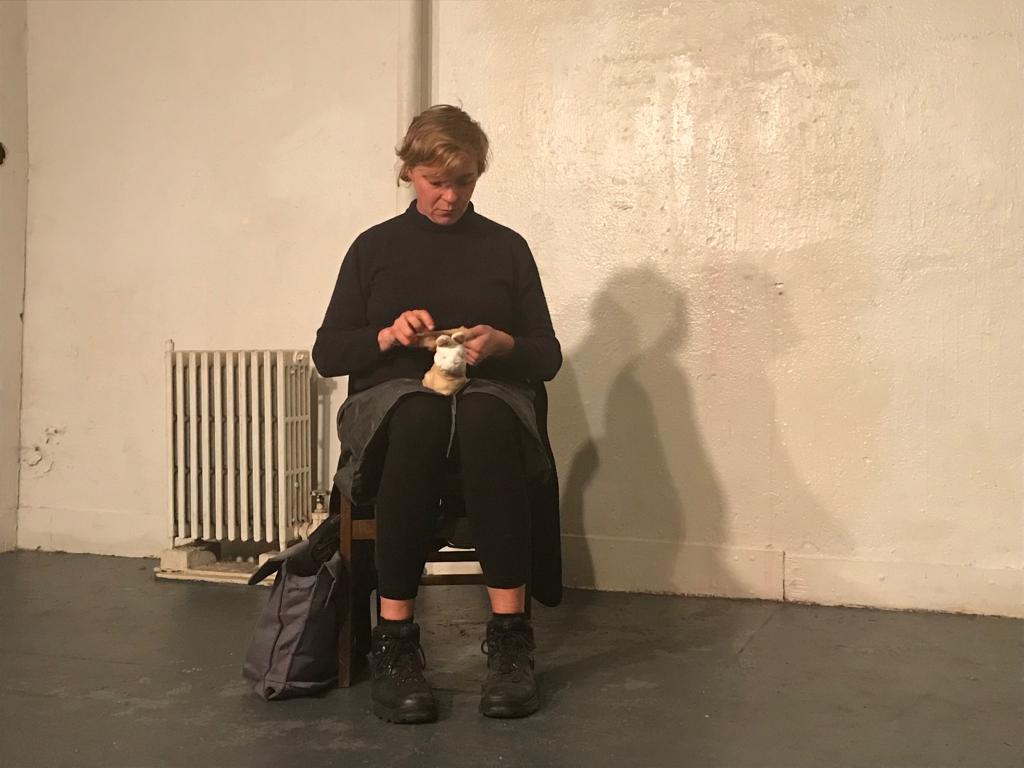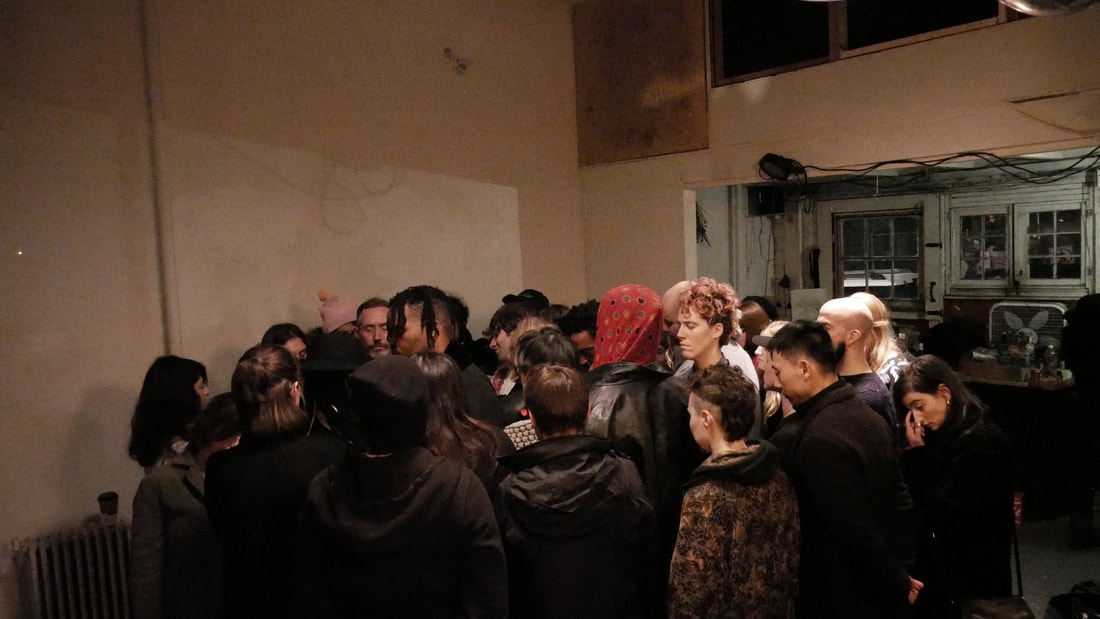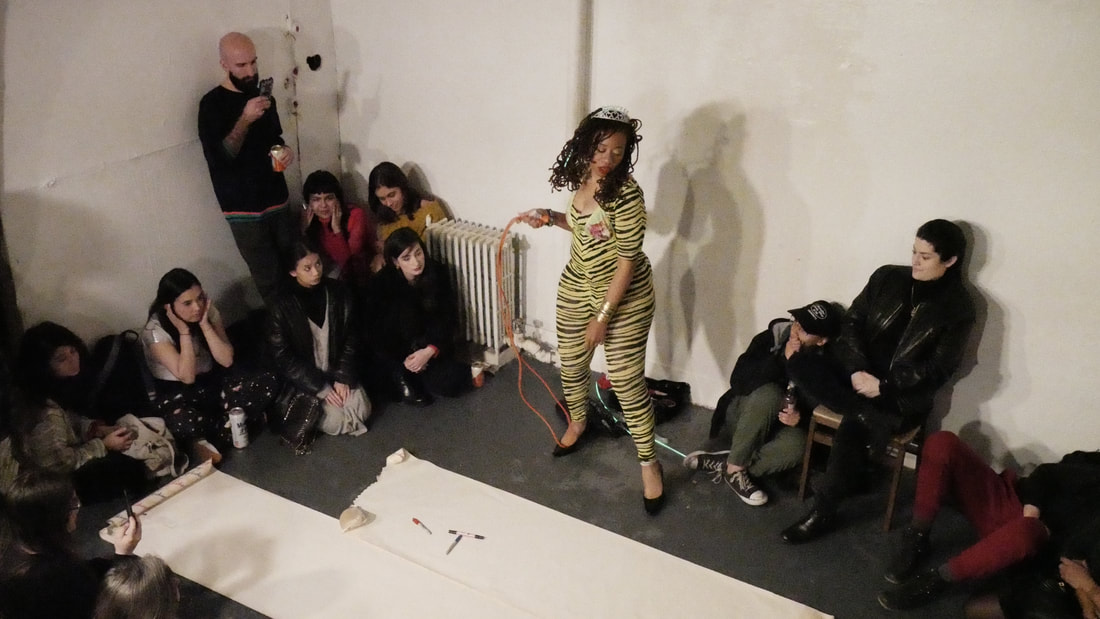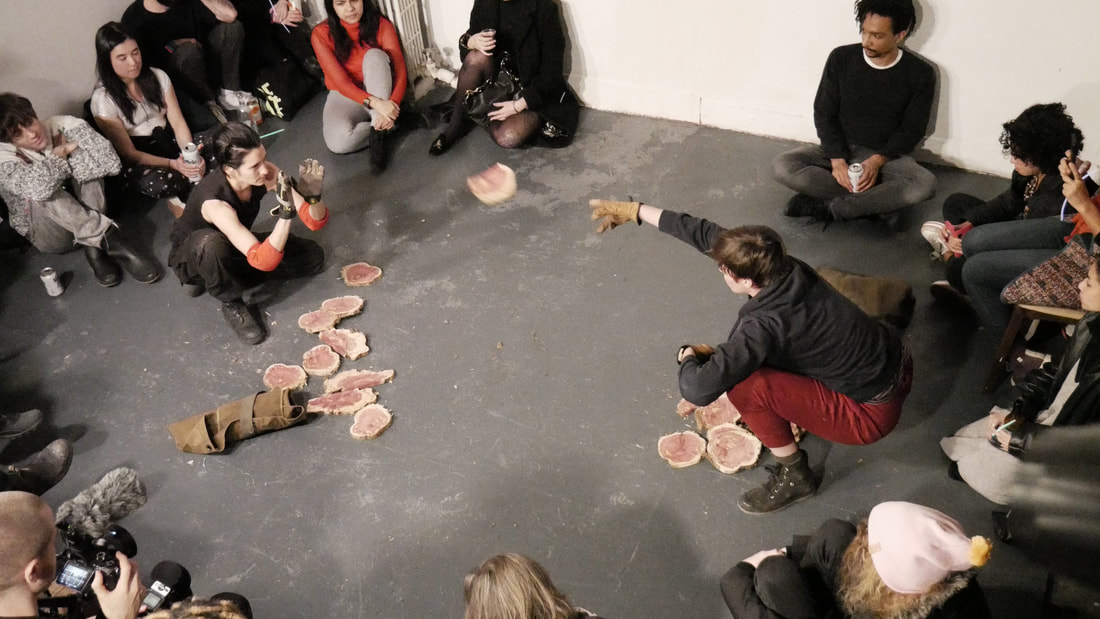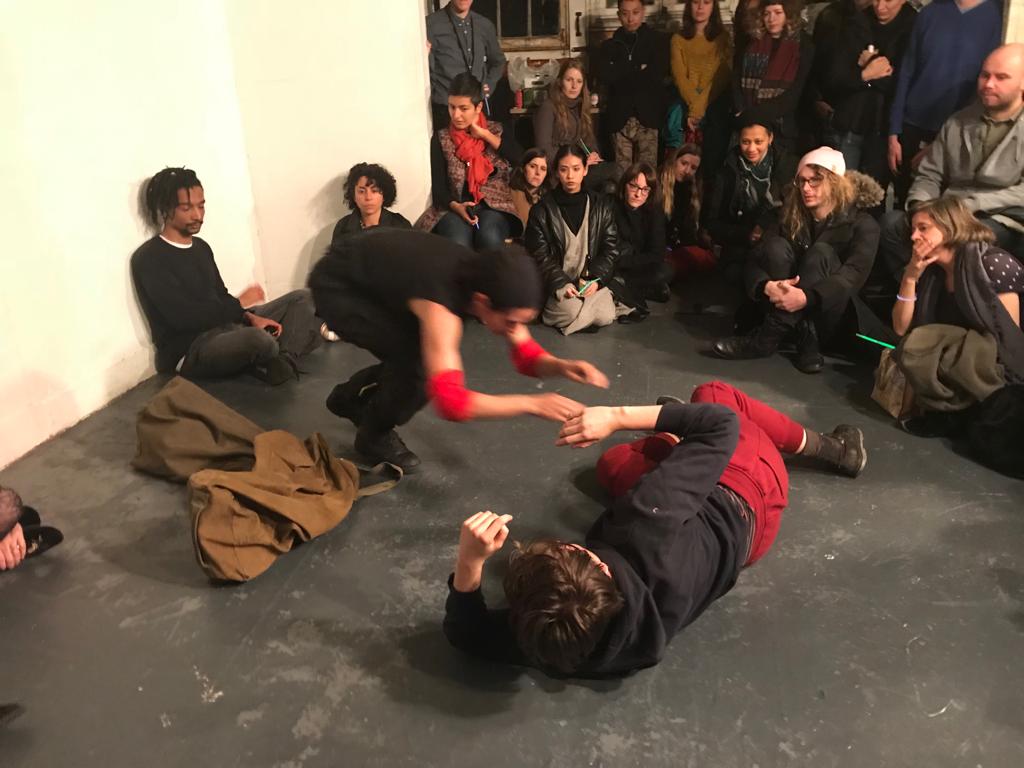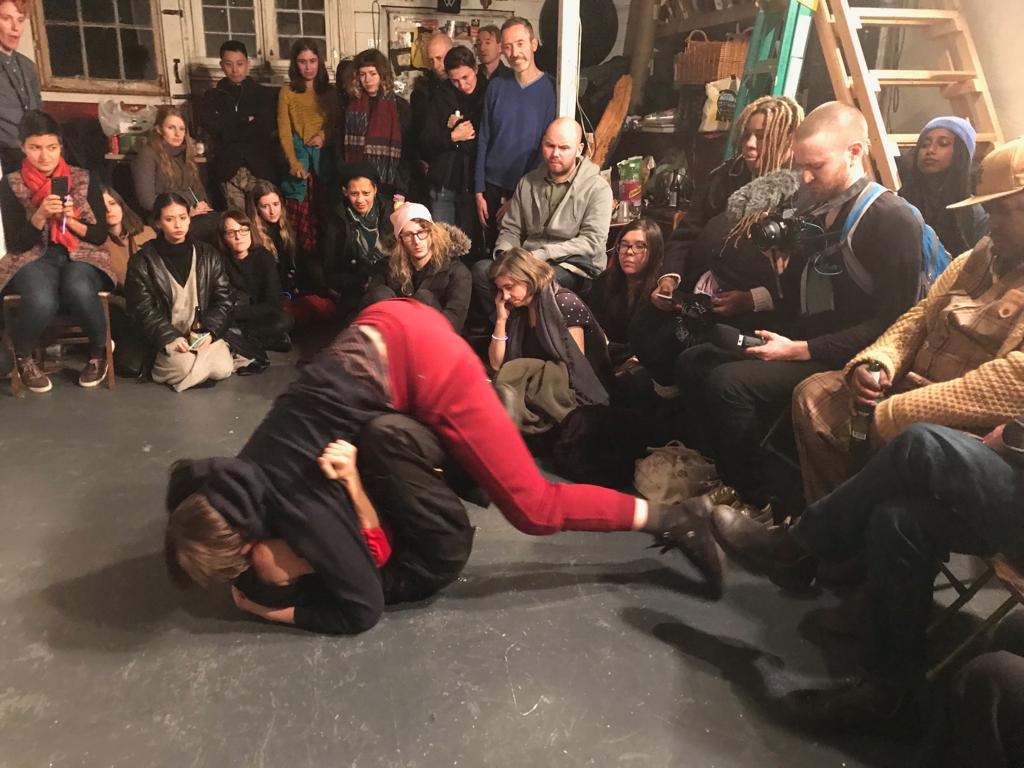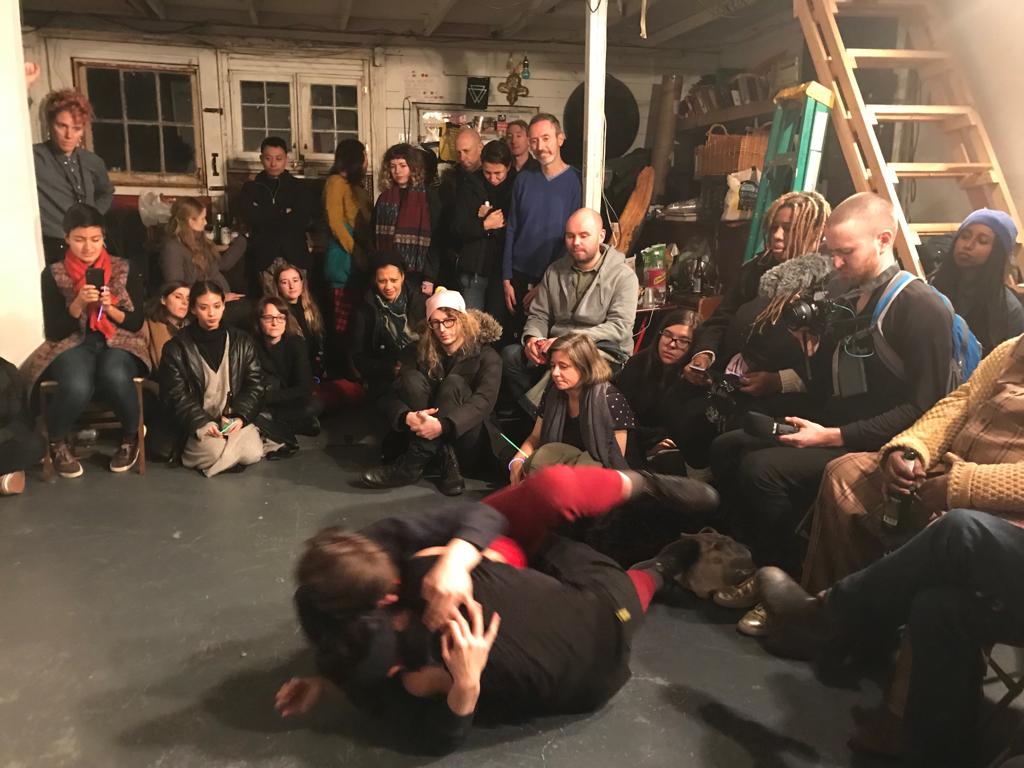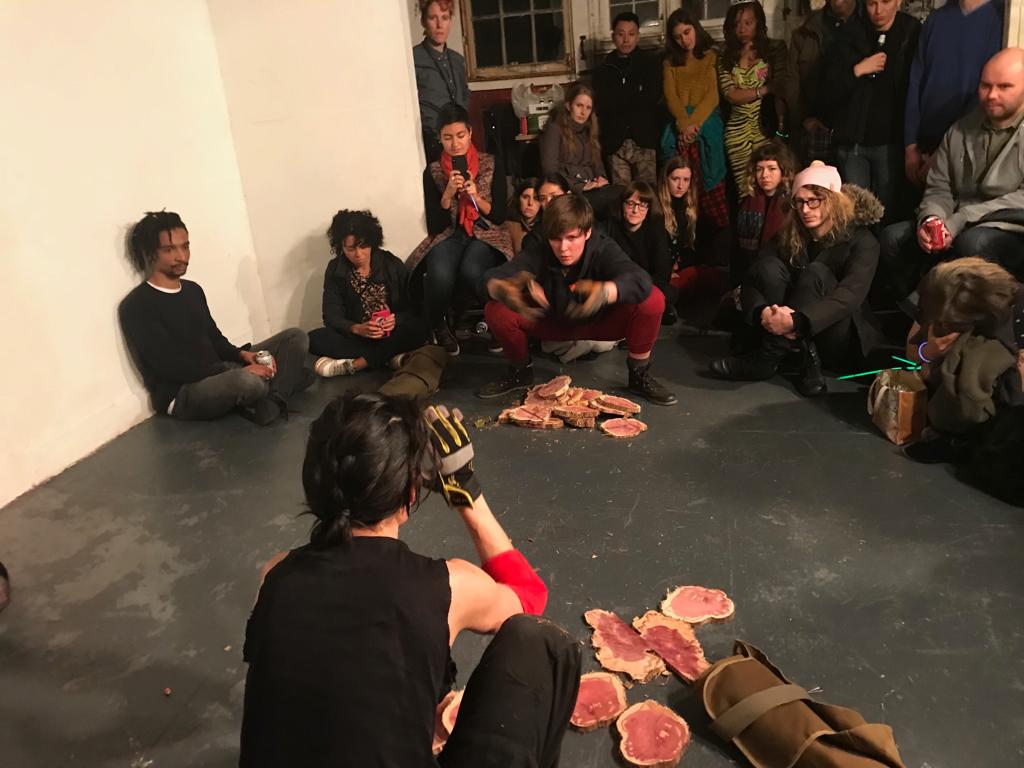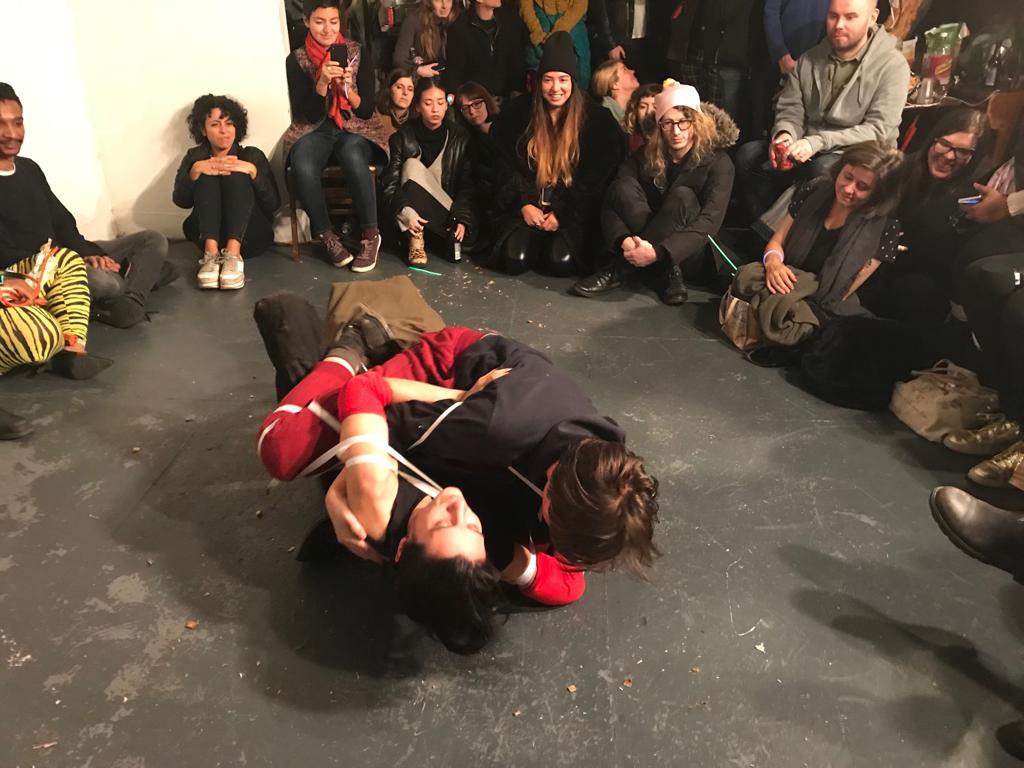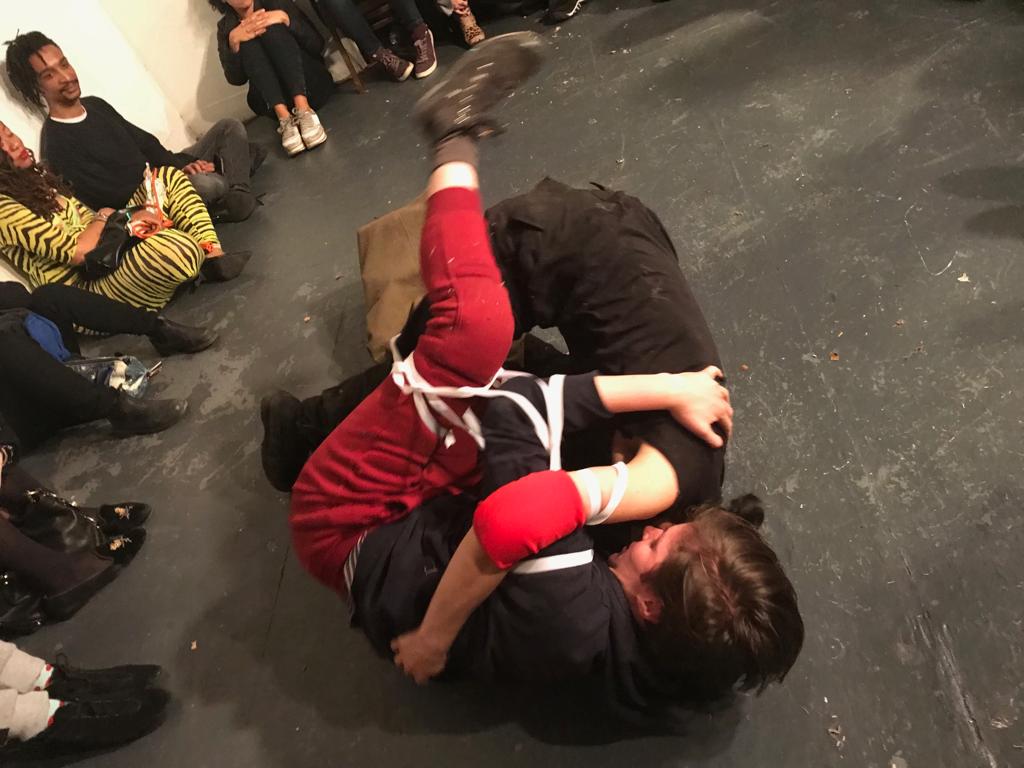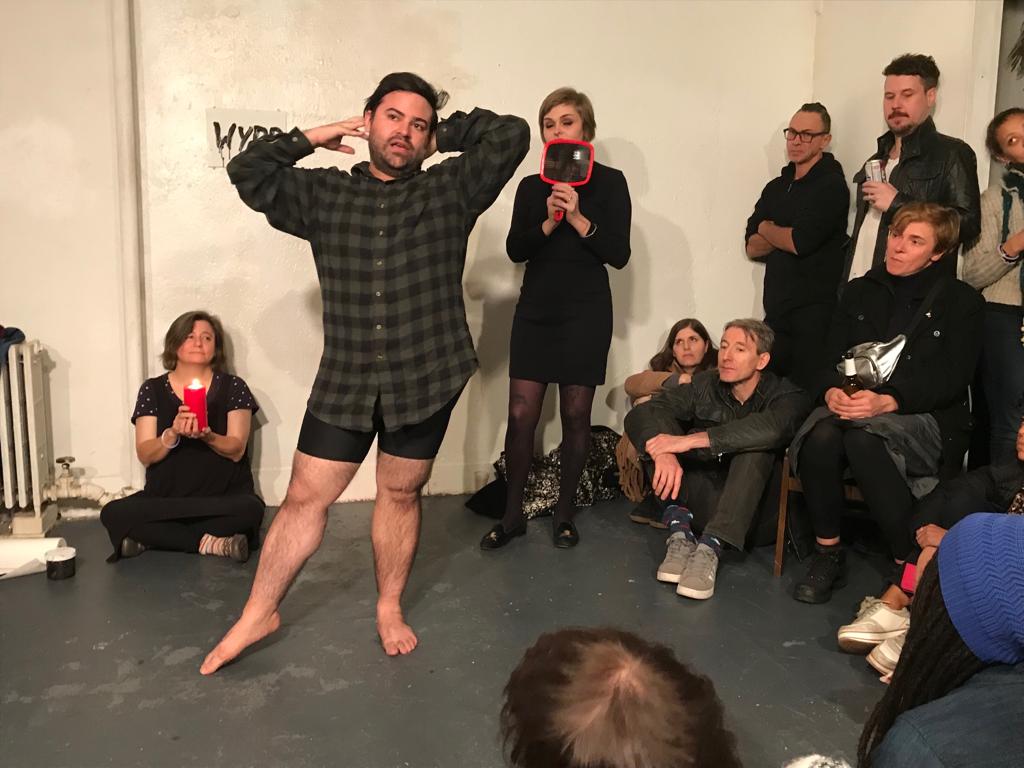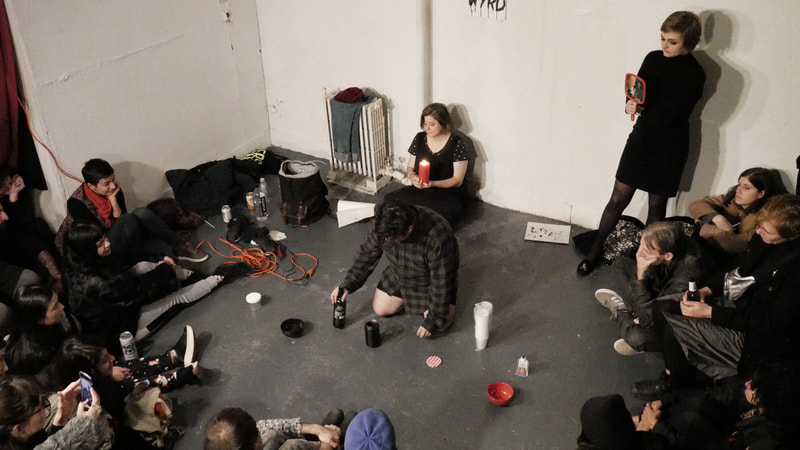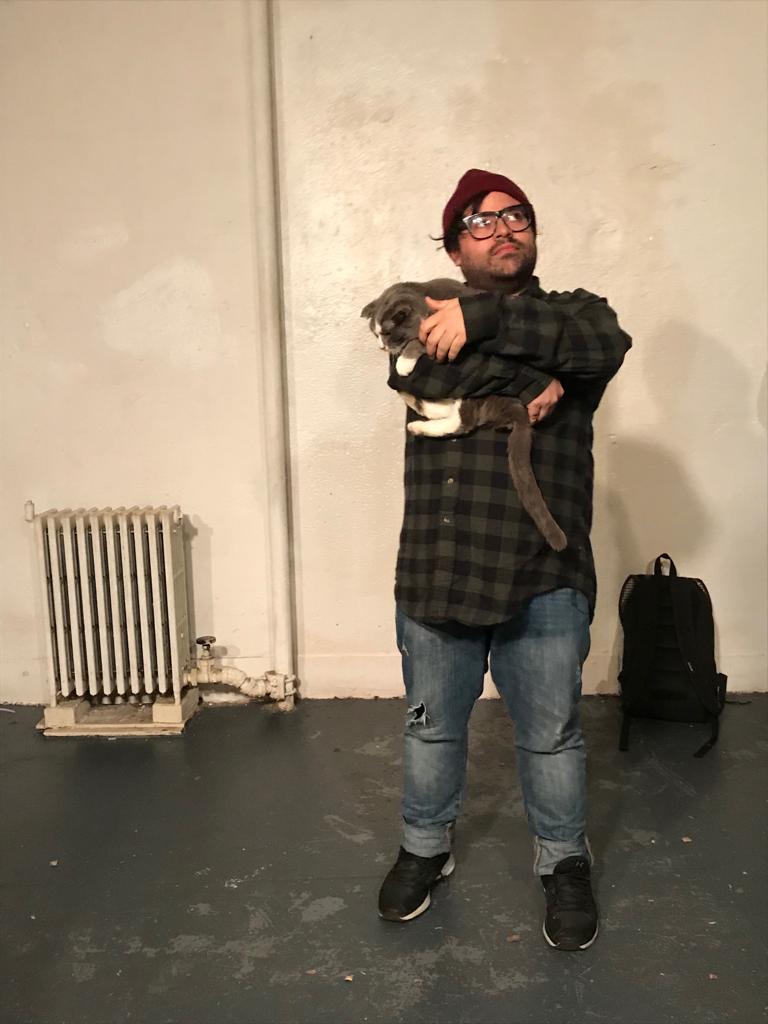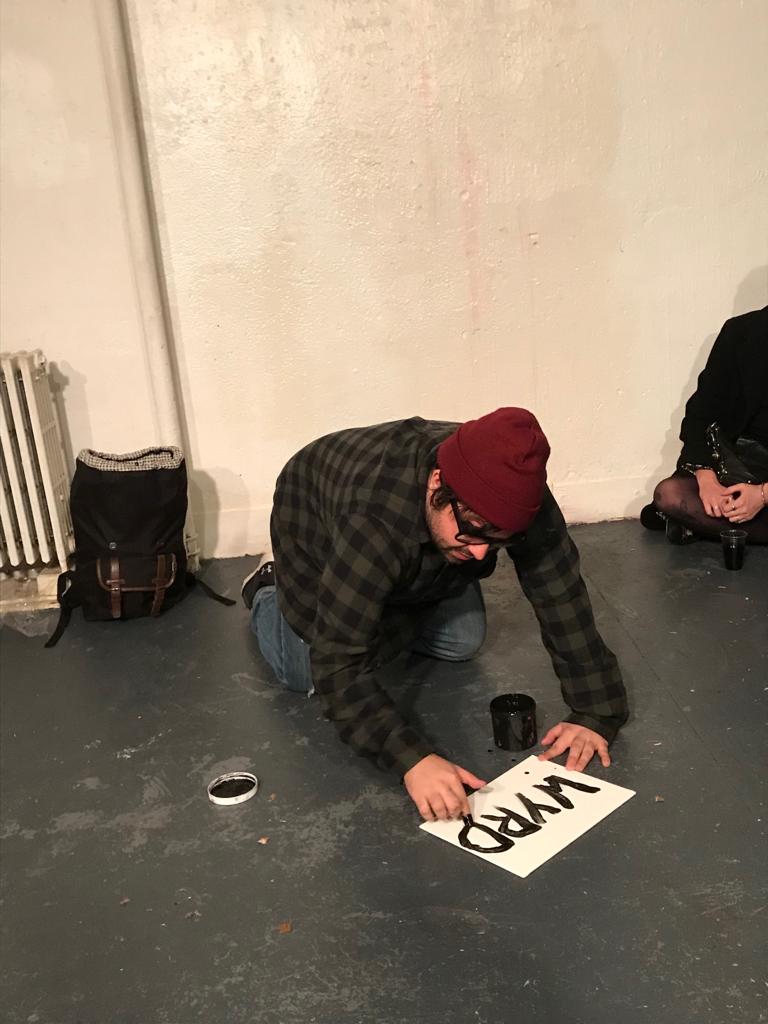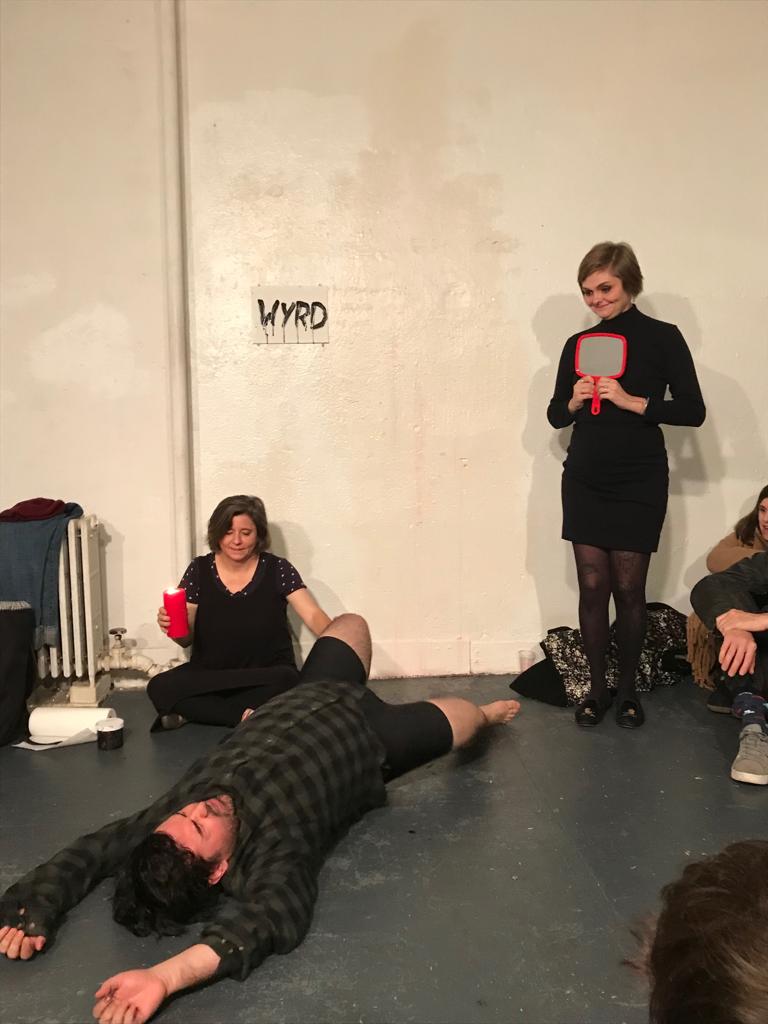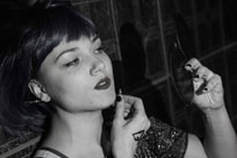|
"Sing out loud, in ESTHER’S HONOR!" The final command from Ayana Evans during Panoply Performance Laboratory’s (Brooklyn, NY) closing festival, Metamorphosis (Nov 16-18) on Saturday, November 17th. Evans’ is holding her signature sparklers as neon blue & green wrist bracelets sway in the dark to the beat in nearly every hand and the room erupts in song, “Your love is my love and my love is your love,” all faces turned towards Esther Neff. We are two thirds of the way through performances on the second evening of the festival and so it’s time for tears, time for joy, seeing soft light in the dark, yes. Co-founded by Esther Neff and Brian McCorkle, Panoply Performance Laboratory (or PPL) has served as a site of experimentation in performance art for nearly 7 years at it’s Meserole St. location in Bushwick. Before that, PPL's PERFORMANCY FORUM has been hosted by other sites, among them the infamous Grace Exhibition Space (which recently relocated from Brooklyn to Manhattan due to the rising price of rent). Metamorphosis marks the transition of a decade-worth of organizing and collaborative community work that has, both out of necessity and choice, resisted the gate-keeping capitalistic model of the art world, providing integral support to the performance scene in Brooklyn and beyond. The night begins with Honey Jernquist’s “Air Mattress II: Upping the Ante”, their first ever repeat of a past performance piece called, simply, “Air Mattress”, also performed at PPL in 2016. Jernquist’s work is deceptively simple. Their first order of business - as the title of the piece suggests - is to blow up two air mattresses, one stacked on top of the other. Later, when I ask for inspiration behind the work Jernquist says, “I had two deflating mattresses to get rid of.” This speaks to the practice of performance art as a whole: repurposing the ‘useless’ - an object that has “failed” at any given assigned task may still have value in a different context, if we only look beyond our expectations. Or, to widen the metaphor - beyond the structures that exist. Jernquist stands with palms facing down, hands stretched out before them and waits as both mattresses, as if by magic, reach their ultimate capacity. They lay them side by side and ask for an audience member to volunteer, cautioning, “You may get wet.” Having seen the original piece, Brian McCorkle is excited to help. Jernquist provides sparse instructions: you puncture a hole in the middle of the mattress, stand there and wait for it to deflate. McCorkle fumbles with the balance while Jernquist stares straight ahead, a barely perceptible look of contempt or satisfaction in McCorkle’s direction inciting laughter from the audience. As the two “compete” for whose feet reach the floor first soap bubbles gather around their ankles. The deeper the weight of their bodies sinks in the more bubbles emerge - a backwards flower, or constellations rising out of dirt. The piece ends with McCorkle lying down, stabbing the air out of the mattress as Jernquist gracefully steps off of theirs. Anja Ibsch steps into the room adorned in black, carrying a bookbag. She sits on a single chair and seems to be considering something, then reaches into the bag set down next to her and pulls out a stuffed toy bunny along with a beige stocking. Carefully, she places the bunny into the garment, with the body of the animal concealed and its head peeking out. She then pulls the stocking over her face, sliding it all the way forward and readjusting. The fabric presses tight against her skin. She sits still, her face compressed and illegible as the bunny looks out over the audience. After some time she pulls out another stocking. Methodically, she places it over her face and over the stuffed animal. She repeats this action 20 more times. Ibsch cuts a line through the fabric up to her nose and the layers of nylon curl around her neck like confetti or foam as it rushes towards shore. Ibsch breathes deeply for several moments - all that’s visible is her mouth, gasping - then takes the sculpture off her head. She holds the remnant in her hands. She places it on the chair and walks away, as if leaving behind something newly formed, or maybe something that always has been she no longer needs. Asking, perhaps, if there is any difference between the two. Dominique Duroseau performs by proxy. Though she is not physically in the room, an audio recording of her voice instructs us to put our phones away, to get in the center, huddle together and close our eyes. She asks us to look deep within ourselves, guiding us towards a place of solace for our individual hardships as we experience a sort of collective meditation. In true Duroseau form, the piece creates a shift of energy even as she herself is not directly present. “Since this is my last performance here, I thought it would be fitting that it should be someone else’s first performance here,” Ayana Evans introduces Justin Sterling, who simultaneously hops and plays trumpet while Evans completes jumping jacks outside. Meanwhile the audience attempts to write down names of everyone they met at Panoply or a nice memory at the space on a sheet of gift wrap paper as Sterling hops above them. Once most of us have finished writing Evans comes back into the space and the lights go down. The names and memories are in tatters on the floor: it is at this point glow sticks are distributed and a Whitney Houston song begins to play. Evans yells, “Put your hands in the air, in Esther’s honor!” And so we do, green and blue and sparklers flying through the dark with gratitude and celebration. IV Castellanos and Amanda Hunt (who will be taking over the lease at 104 Meserole St. and reopening IV Soldiers) wrestle each other like kittens do when fighting, as Hunt later tells me, jumping to and fro, a display of playful aggression within intimacy. They treat their bodies like objects and then later, handle objects between them in the form of chopping blocks thrown back and forth. From the hands of one to the other, out of one backpack and into the next. Castellanos and Hunt end the piece by tying their bodies together with white ribbon and discussing performances they have seen at PPL over the years, rolling over each other out of audience vision while still in discussion. “Aw… baby,” Geraldo Mercado says to Judge Judy (the cat) as she walks over to him, asking to be picked back up. Mercado begins his performance cradling the 12 year old PPL resident and pacing the room, instructing audience members where to stand. “At one point I promised myself I wouldn’t start out another performance by addressing the audience,” Mercado says and the room laughs. “Well, little did I know.” Throughout the piece, Mercado references several performances he’s done at PPL in an attempt to recreate certain elements, to make them “better”. Like a true Cancer, he recounts a dream he had. “It was about Beowulf,” Mercado says. “I have never read Beowulf but I did look up the plot on Wikipedia after I had the dream.” Mercado then proceeds to summarize the epic poem and here is another testament to the democratic nature of performance art - it’s okay not to have read a work of acclaimed literature, or a “classic” (there are too many “classics” to have read them all anyway, and who gets to determine what a “classic” is? Who makes it in that canon and who is kept out, who never had a chance of getting there to begin with?) - but should the shadow and the imprint of that work still touch your life, you can take from it however suits you best. In this case - thanks to a dream, with a Wikipedia search and through performance - Mercado turns his seeming lack of Beowulf knowledge on its head. “In my dream there was a word. I didn’t know what it meant,” Mercado tells us as he gets out a white rectangular poster board and begins to finger paint. “There was this word,” Mercado says and the audience laughs as he completes his painting which says, simply, “WYRD.” Wyrd, pronounced as “weird” or “word”, means “fate.” Throughout the piece (also aptly titled, “WYRD”) the painting hangs behind Mercado on the wall. By exploring past performances he cycles through past triumphs and disappointments, beginning with his rendition of Leonard Cohen’s “Suzanne” as a teenager, moving on to monster myths and legends, and in the end landing us at a place of vulnerability so potent it is almost painful. This is what Panoply Performance Laboratory has been, for artists and spectators (however the word 'spectator’ manifests within performance) alike. A place to celebrate, to grow, collaborate, rage and connect through pushing the boundaries of performance and in turn expanding the boundaries of our lives. Performance art can be an explosive medium that is easy to exploit or cheapen, and PPL has served as a sanctuary of a sorts for artists to take their work seriously. No easy feat in this current climate, and as a physical location for our bodies and ideas to gather - it will be sorely missed. In the meantime, you can follow PPL's future here.
0 Comments
Your comment will be posted after it is approved.
Leave a Reply. |
CONTRIBUTORSIan Deleón Archives
July 2023
|
|
MISSION // Based in Brooklyn, NYC, PERFORMANCE IS ALIVE is an online platform featuring the work and words of current performance art practitioners. Through interviews, reviews, artists features, sponsorship and curatorial projects, we aim to support the performance community while offering an access point to the performance curious.
Performance Is Alive is a fiscally sponsored project of Fractured Atlas, a 501(c)(3) charity. Contributions made payable to Fractured Atlas for the purposes of Performance Is Alive are tax-deductible to the extent permitted by law. |
